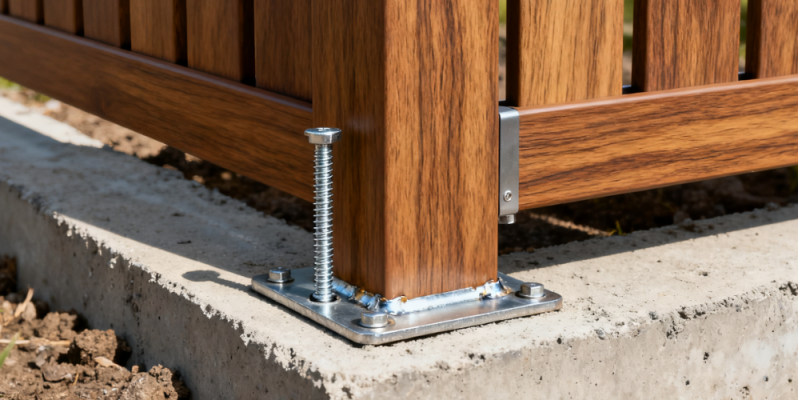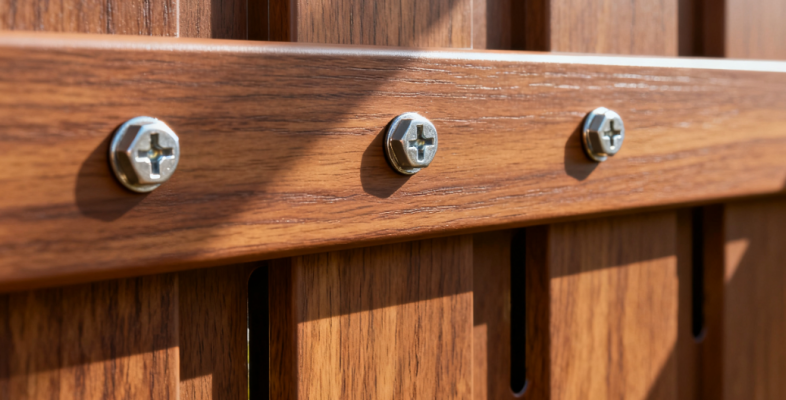
The installation and maintenance of a 6063-T5 aluminium fence is required.
- By:Naview
- Date:2025-10-30
1. Preparation before installation
Preparation work is crucial for the installation of 6063-T5 aluminium fences, directly affecting installation quality and efficiency. Firstly, an on-site investigation should be conducted to understand the terrain, topography, soil conditions and other factors at the installation site. Based on the design drawings, parameters such as the installation position, height and column spacing of the fence should be determined. Secondly, prepare the necessary installation tools and equipment, such as tape measures, level gauges, drills, hammers, wrenches and excavators (if foundation pit excavation is required). Then, check the quality and quantity of the finished fence to ensure it complies with the design requirements and contract agreements. Any damage or missing parts should be replaced or supplemented in a timely manner. In addition, concrete foundations or embedded connectors should be constructed in accordance with the design requirements. The concrete foundation’s strength grade should not be lower than C20, and the position and quantity of the embedded connectors must be accurate.

2. Installation process
The installation process for a 6063-T5 aluminium fence generally includes the following steps:
1. Lay out and position. Using tools such as a tape measure and an ink line, set out the installation reference line of the fence and the position line of the columns on site according to the design drawings. The second step is to excavate the foundation pit or carry out foundation treatment. For fences that require a concrete foundation, the pit should be excavated according to the column position line. The size of the pit should be determined according to the design requirements; it should generally have a depth of at least 600 mm and a width of at least 400 mm. If the foundation has embedded connectors, check that they are in the correct position and level to ensure they comply with the requirements. The third step is column installation. Place the column in the foundation pit or connect it with pre-embedded connectors. Then, adjust the verticality and levelness of the column and fix it with concrete or bolts. After pouring the concrete, leave it to cure for at least 7 days. Step four: install the horizontal bars and railings. Connect the crossbars and bars to the columns using connectors. Adjust the levelness and verticality of the crossbars and bars to ensure even spacing and a firm connection. Step five: accessory installation. Install anti-theft locks, alarms, decorative components and other accessories according to the design requirements. Step six: clean and inspect. After installation, clear up any debris on site and check that the fence complies with design requirements and relevant standards in terms of size deviation, verticality, flatness and connection firmness.
3. Maintenance points and methods
Maintaining a 6063-T5 aluminium fence is relatively simple and mainly involves daily cleaning, regular inspections and troubleshooting. For daily cleaning, regularly clean the fence surface with clean water and a neutral detergent to remove dust, dirt and stains. Then, wipe it dry with a clean cloth. Avoid using acidic or alkaline cleaning agents to prevent damaging the fence’s surface coating. A comprehensive inspection of the fence should be conducted once a month or quarter. This includes checking that the connections of the columns, crossbars and bars are firm and not loose, deformed or damaged; that the surface coating is not peeling, fading or scratched; and that the accessories are intact, e.g. that the anti-theft lock is working properly, and the alarm is sensitive. If the fence is found to be loose, the connecting parts should be tightened promptly. If the surface coating is found to be peeling or fading, it should be repaired or resprayed promptly. If any fence components are damaged, they should be replaced promptly. In areas with high levels of corrosion, such as coastal areas, the frequency of inspections and maintenance should be increased, and anti-corrosion protection strengthened.
4. Here are four common problems and how to solve them.
If you’re installing or using a 6063-T5 aluminium fence, there are some common problems that can happen. It’s important to solve these quickly. One reason is that the column is not straight, which is mainly because it was not put in properly or because the ground it is standing on has moved. The solution is to readjust the columns to be more vertical. If the foundation is uneven, it should be made stronger. The second issue is the peeling or fading of the fence surface. This can be caused by the way the surface is treated before painting, how the fence is used, or if it is not looked after properly. The solution is to repair or repaint the areas that have fallen off or faded. The third issue is loose connectors. These are mainly caused by not tightening the connectors during installation or by the connectors becoming loose after long use. The solution is to tighten the connectors regularly, and replace any that are damaged. The fourth is the bars changing shape. This can be caused by them expanding and contracting because of heat or changes in temperature. The solution is to fix the slightly bent bars. If the bars are very bent, they need to be replaced. The fifth reason is the overall shaking of the fence, which is mainly due to the weak foundation of the columns or the fence structure not being stiff enough. The answer is to make the column foundation stronger or add more crossbars to make the fence stiffer.
CONTACT US

Foshan Naview New Building Materials Co., Ltd.
We are always here offering customers our reliable products and service.
If you want to liaise with us now, please click contact us
